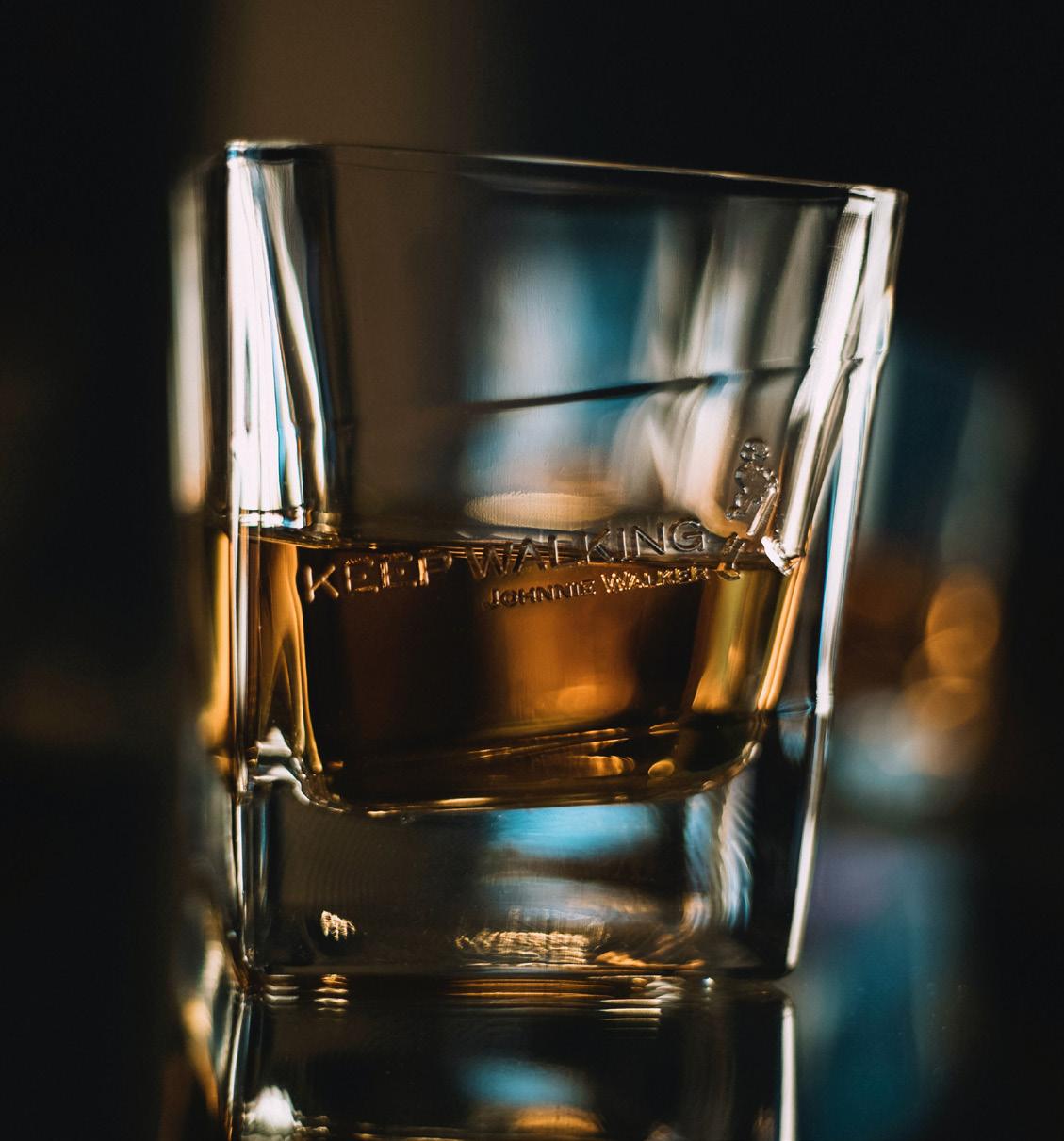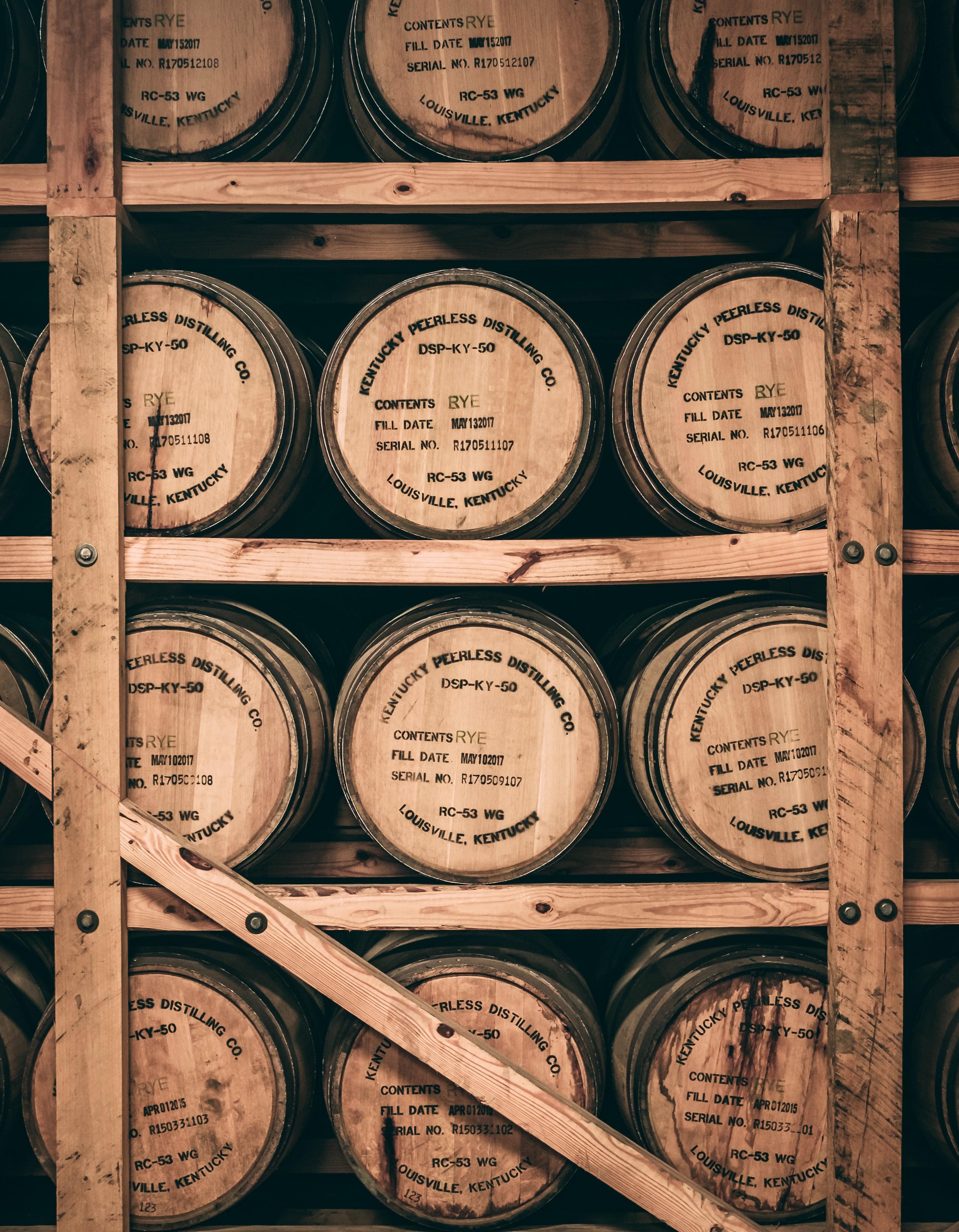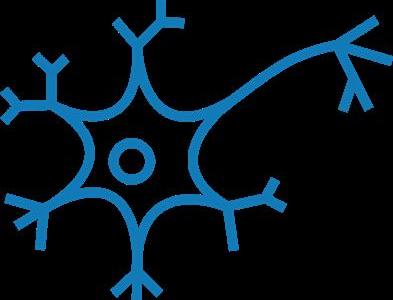
7 minute read
Whiskey webs
Where whiskey and science collide
ARTICLE AND DESIGN BY KELSEY MELCHER BURROUGHS, HEALTH SCIENCE, 2022
Advertisement
Looking for an unconventional
career? Meet Stuart Williams, an associate professor of engineering at the University of Louisville who conducts research about whiskey. Williams is interested in the study of colloids, a type of mixture in which solid particles are suspended in fluid. He learned from a colleague that whiskey contains colloids, and that piqued his curiosity. Not long after, Williams began studying whiskey alongside Orlin Velev, a colloid science great, looking for an answer to the question: “Can you differentiate whiskey from their evaporated drops?” Williams and Velev discovered that when a diluted drop of the spirit evaporates, it leaves behind a beautiful matrix pattern, which they dubbed a “whiskey web.”
Whiskey is a type of alcohol produced by distilling malted grain. Typically, whiskey is aged in charred oak wood barrels. American whiskey is aged in new charred oak wood barrels, resulting in an increased number of solid particles suspended in the alcohol. This contributes not only to the alcohol’s flavor profile and color but also to its ability to dry in a whiskey web pattern.

The aging process that whiskeys, particularly American whiskeys, undergo plays a critical role in their ability to form whiskey webs. Williams found that drops of diluted American whiskey with an alcohol by volume of 30 percent or greater resulted in a uniform, thin film when evaporated. Drops of whiskey with an alcohol by volume of around 10 percent or less resulted in coffee-ring patterns when evaporated. In the middle range, whiskey webs formed.
So how exactly are these webs produced? Williams explains that, “when you dilute whiskey with water, some of its chemicals are water insoluble, thus creating micelles that would eventually migrate to the surface [during evaporation].” This results in the formation of a chemical monolayer at the surface of the liquid. The surface area of this monolayer decreases in size during evaporation, causing a buckling phenomenon that creates web-like folds in the monolayer. These folds create the whiskey web pattern. Through his research, Williams showed that the chemical makeup of each whiskey affects the level of branching and wrinkling within its whiskey web, thus contributing to its unique pattern.
These intricate patterns can be visualized using digital imaging with a microscope or even with a smartphone. Through digital image analysis, Williams collected enough experimental data so that he was able to learn, recognize, and accurately match images of whiskey webs to the correct brand of whiskey 90 percent of the time.
Preliminary applications of Williams’s findings include using whiskey fingerprints to identify knockoffs. It is not uncommon for lower quality, younger whiskeys to be marketed as expensive, higher quality whiskeys in order to trick consumers into paying more. Through the use of whiskey web image analysis, one is able to determine which whiskeys are authentic and which are counterfeit. This process may also aid in the chemical analysis of whiskey and play a role in quality control for whiskey distillers.
Another common pattern formed when liquid dries is called the coffee ring effect (CRE). This phenomenon occurs when a drop of colloid dries, leaving behind a stain in which the once-suspended particles dry on the perimeter of the drop. A common iteration of the CRE is seen with coffee stains, hence the name.
What occurred in Williams’s research when he evaporated whiskey of alcohol by volume between 20–25 percent defies the expected CRE behavior. Thus, these findings may have implications for the suppression of the CRE in processes involving colloids, such as painting and inkjet printing. The CRE is often seen as an imperfection in paint and ink, and thus suppressing it results in superior products. The suppression of the CRE can also be used for the detection of nucleic acid for DNA sequencing as an alternative to polymerase chain reaction.
Looking at everyday spills and stains in a new light makes life’s mundane routines all the more fascinating. It might even motivate some to prioritize washing their laundry. Perhaps there is more taking place in that blob of ketchup you spilled on your shirt then you might think! If you are interested in creating your own whiskey webs, Williams provides explicit instructions on his website: http://whiskeywebs. org.
ACS Nano (2020). DOI: 10.1021/acsnano.9b08984 Adv. Mater. Interfaces (2017). DOI: 10.1002/ admi.201700944 Sensors and Actuators B: Chemical (2015). DOI: j.snb.2014.09.006
PHOTOS BY UNSPLASH
Storing memory with light
How 50 years of research and innovation have brought us closer to efficient and dynamic information storage

BY CATRIN ZHARYY, BEHAVIORAL NEUROSCIENCE, 2023
What comes to mind when one
thinks of physics and what comes to mind when one thinks
of biology seem quite distinct. But over time, the two fields continue intersecting, especially as scientists try to replicate biological systems using electrical circuits. This is an enormous challenge because biologists first need to map and understand the original system, and physicists need to translate multilayered processes into a series of electrical impulses. However, a device made of metals called a memristor may be the key to efficient future biomimicry.
In 1971, Leon Chua, an electrical engineer at the University of California, Berkeley, published a paper called “The missing circuit element,” in which he suggested that besides the resistor, capacitor, and inductor, there should be a fourth component to the basic passive circuit. He noticed that despite there being an equation and passive circuit element connecting almost every combination of circuit variables, there wasn’t an equation nor element to relate charge and magnetic flux. Chua derived the missing equation to represent “memristance,” but he didn’t propose the possible physical qualities of a memristor. His paper was largely theoretical and served as an open-ended question to the rest of the physics community.
Thirty-seven years later in 2008, Stanley Williams, who completed his PhD in Physical Chemistry at UC Berkeley just seven years after Chua published his paper, answered the call in a paper titled “The missing memristor found.” His team at Texas A&M University created a combination of metals that could change between two states depending on which direction current was passed through it.
The part that was most exciting to fellow scientists was that if you switched the metal to a particular state and then turned off the circuit, the metal would “remember” which state it was in last when you turned it on again. Williams called one state ON and the other OFF because this is the binary system by which computers function: an ON (represented by 1) is an electrical impulse and an OFF (represented by 0) is the absence of it.
The combination of metals Williams built the memristor out of can be thought of as a sandwich with platinum as the bread and titanium dioxide (TiO2) in between. Essential to Williams’s memristor were two layers of TiO2 side-by-side inside the “sandwich”: one was normal and the other was oxygen-deficient. When a material is oxygen-deficient, some oxygen molecules are shot out of it, and the empty spots left behind are called oxygen vacancies. Positively-charged oxygen vacancies want to move toward a negative charge, and since currents are made up of negatively-charged electrons, the vacancies travel in the same direction as the electron flow.
If the current reaches the side with the oxygen-deficient TiO2 first as it goes through the memristor, then the oxygen vacancies push into the regular TiO2, following the flow of electrons. When they do this, they “convert” the section of normal TiO2 into oxygendeficient TiO2. If the current goes the other way, then the oxygen vacancies crowd together at the edge of the TiO2, leaving the majority of the TiO2 oxygen-”sufficient.”
Changing how much of the total TiO2 is occupied by oxygen vacancies is how the state of the memristor can be varied. The total resistance of the memristor depends on if most of the TiO2 is oxygen-deficient or not. Normally, TiO2 has high resistance to electric current because it is an insulator, but oxygendeficient TiO2 has low resistance. Williams called the low resistance state ON and the high resistance state OFF.
More recently, in January 2021, a group at the Institute of Materials Science of Barcelona created a memristor out of a modified combination of metals, but it holds memory by the same lowresistance/high-resistance principle. Incredibly, the unit they engineered can not only be switched between states by an electric current but by shining a light on it as well. Before this finding, memristors were exciting in the field of neuromorphic engineering, which aims to replicate nervous systems using circuits, but now they’re even more promising because memristors could be activated with light in the same way sensory neurons fire in response to stimuli. Not only are memristors useful for biomimicry but they could also be incorporated into modern technology like cell phones and laptops because of their energy efficiency and compact size. Chua’s ambitious proposal from 50 years ago that led to memristors may soon have a wide impact from carrying improved devices around in our pockets to making artificial brains.
Nature Communications (2021). DOI: 10.1038/ s41467-020-20660-9 Nature (2008). DOI: 10.1038/nature06932 PHOTOS BY SHUTTERSTOCK










